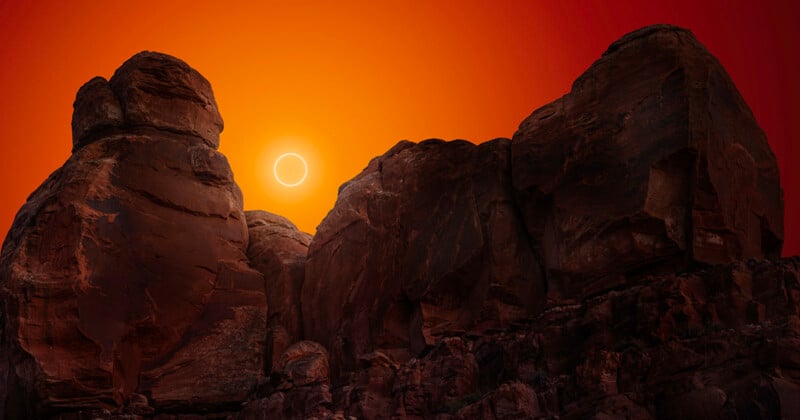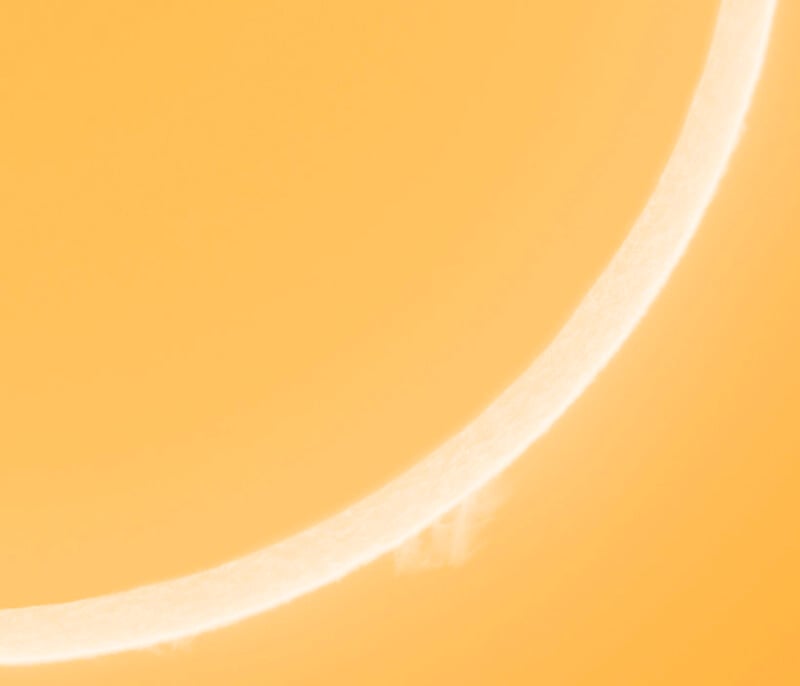Two Photographers Create Magnificent Gigapixel Image of Annular Solar Eclipse

With less than a month to go before the 2024 total solar eclipse, astrophotographers Andrew McCarthy and Dan Stein have released a gigapixel image of last year’s annular solar eclipse.
The stunning image was a collaboration between the two talented lensmen. The picture was taken in Utah and is a whopping 1.69 gigapixel image which can viewed in its zoomable entirety here.
“What’s unique about it is it was captured using a combination of white unfiltered light and a hydrogen-alpha telescope,” McCarthy tells PetaPixel.
“So it’s detailed enough to actually see atmospheric details on the Sun. You can see prominences and spicula in the solar chromosphere when you zoom in.”

The picture, entitled Ring of the Gods, required extensive planning, precise positioning to be centered in the path of the eclipse, and exact coordination between McCarthy and Stein.
“Once it was captured, the most challenging part was the massive file size. At 1.69 gigapixels my computer was at its breaking point, and crashed constantly during editing,” McCarthy explains.
“The photo itself is fairly simple outside of that, using a very straightforward HDR blend with some masking to combine the various filtered shots with the unfiltered landscape mosaic.”
The photo duo used “a lot” of cameras while in the Utah desert and ended up with thousands of photos to create the panorama.
According to Stein’s Instagram page, McCarthy “crafted the insanely high-resolution image of the Sun using his h-alpha solar telescopes.” Meanwhile, Stein captured a mosaic of the landscape in the foreground and the pair processed the image together.
“Dan’s incredible landscape photography expertise next to my experience photographing the Sun in h-alpha gave us the skill set needed to make something unique, unlike any landscape photo I’ve ever seen,” McCarthy says.

McCarthy reveals that it was quite easy to composite the two shots together since Stein’s photos contained the white light of the Sun for reference. But it still took five months from capturing the image to completion.
“Combining the light from multiple telescopes using multiple filtration methods can create some wonky results, and we wanted the final image to be flawless, and so detailed it could print up to the size of a building and still look great,” adds McCarthy. “I think we reached that goal.”
To buy a copy of the print, head to McCarthy’s website.
More of the photographers’ work can be found on Stein’s Instagram and McCarthy’s Instagram.
Image credits: Andrew McCarthy and Daniel Stein.


